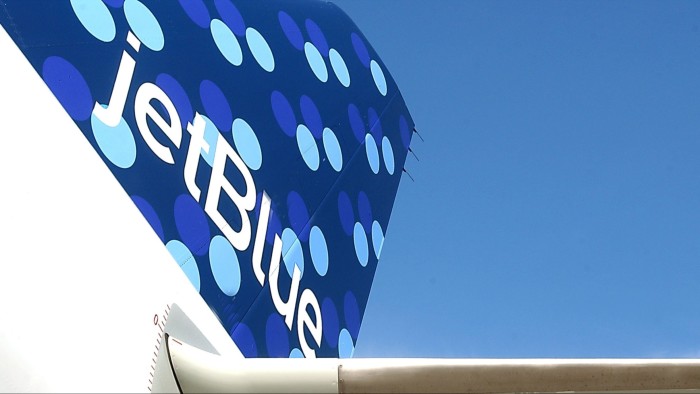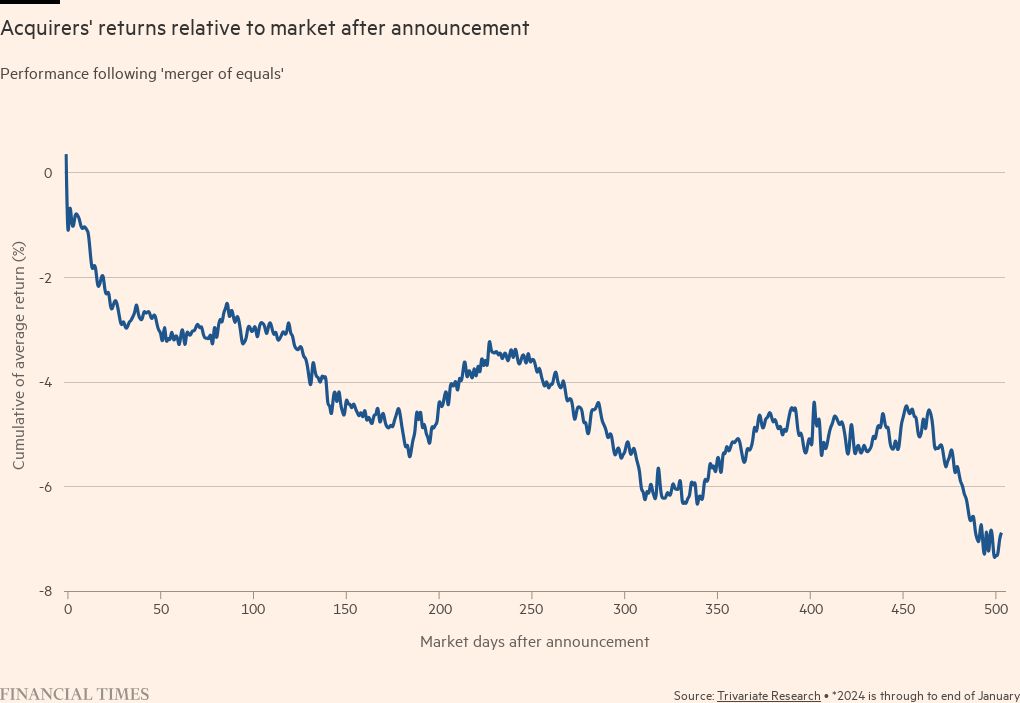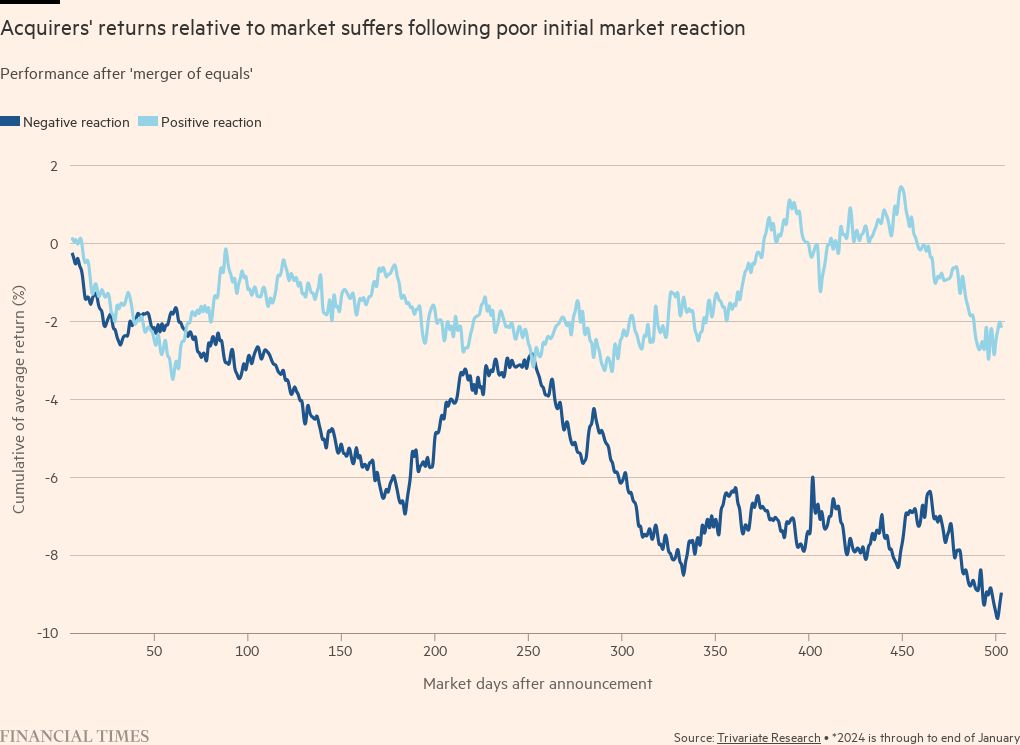Why investors should be wary of ‘mergers of equals’

Roula Khalaf, Editor of the FT, selects her favourite stories in this weekly newsletter.
The writer is founder and chief executive of Trivariate Research
Despite a modest increase in deal announcements recently and some increasing chatter about deals in the works, total mergers and acquisition activity has been muted for much of the past two years.
We attribute slowing activity to a decelerating US economy and uncertainty about the Federal Reserve’s stance on interest rates. Moreover, the regulatory environment remains a burden. In such uncertain macroeconomic regimes, management teams can be tempted to instigate change by doing deals with companies that are similar in size, so-called merger of equals.
We define these deals as those between two companies within 20 per cent of the market capitalisation or enterprise value (including net debt) of each other. As these tend to be agreed deals, they might be seen by management as less risky to pull off.
But that is not always the case. Some of these get announced but do not close quickly for regulatory reasons such as the planned combination of JetBlue Airways and Spirit Airlines. And the record of the past 20 years indicates investors should be cautious about the prospects for mergers of equals. Following the announcement of a merger of equals, the stock price of the average acquirer lags behind industry peers by more than 7 percentage points cumulatively over the following two years. A good strategy for investors can be to sell the shares of the acquirer on the day of the announcement.
Management teams and boards can be enticed to combine with a company of similar scale for a variety of reasons, including the possibility of better pricing power, cross-selling opportunities, or cost reductions. Most mergers of equals in the US over the past 20 years are mid- or small-cap companies, with only a handful of mega- or large-caps. It is twice as likely a so-called value stock — one trading at a low valuation compared with its assets or fundamental performance — will target a merger of equals than a growth stock that has earnings above the market average.
Ninety-five per cent of mergers of equals are in the same industry, with financials, energy, consumer discretionary and healthcare the most common sectors. Lower quality companies — which we define on a range of factors such as dividend payments, profitability and credit risk metrics — tend to engage more in mergers of equals, with only 40 companies we rank as high quality involved in the past 20 years.
There is an asymmetry to the subsequent performance of stocks following the first week of trading after an announced merger of equals. If the initial market reaction to the announcement is poor in the first week, the stock of the merged company suffers another 10 percentage points of underperformance against its industry group on average over the next two years. However, if there is a positive reaction in the first week, there are no incremental excess returns compared with the market over the next two years on average.
If companies are considering a merger of equals, or investors are considering buying the shares of the acquirer, there are three important considerations. First, high-quality companies should not be combined into other companies as often their fundamental edge is eroded by being mismanaged by a similar-sized company. On average, a high-quality company targeted in a merger of equals lags behind its industry group by 20 per cent over the subsequent two years on a relative basis.
Second, financial health matters as shown by the performance of acquirers with poor free cash flow yields — the amount of free cash flow generated per share as a percentage of the stock price. The subsequent performance of such acquirers is markedly inferior to those in the top third of companies ranked by free cash flow yield. Poor profitability is also a red flag, with acquirers in the bottom third of gross margins performing 8 to 10 percentage points worse than more profitable acquirers over the subsequent two years.
Third, the more idiosyncratic a stock is compared with the rest of the market prior to the deal announcement, the lower the potential for business synergies and economies of scale to help the business, driving drastically worse underperformance — much worse on average than poor free cash flow yield or low gross margins.
Here, a different management team may not understand how to maximise the culture, assets or peculiarities of one business and assume synergies that on average destroy the positives of the asset they hoped to optimise. In general, we would not advise a company to buy one of a similar size and would caution investors on being sold on the potential for synergies in such a deal.


Comments